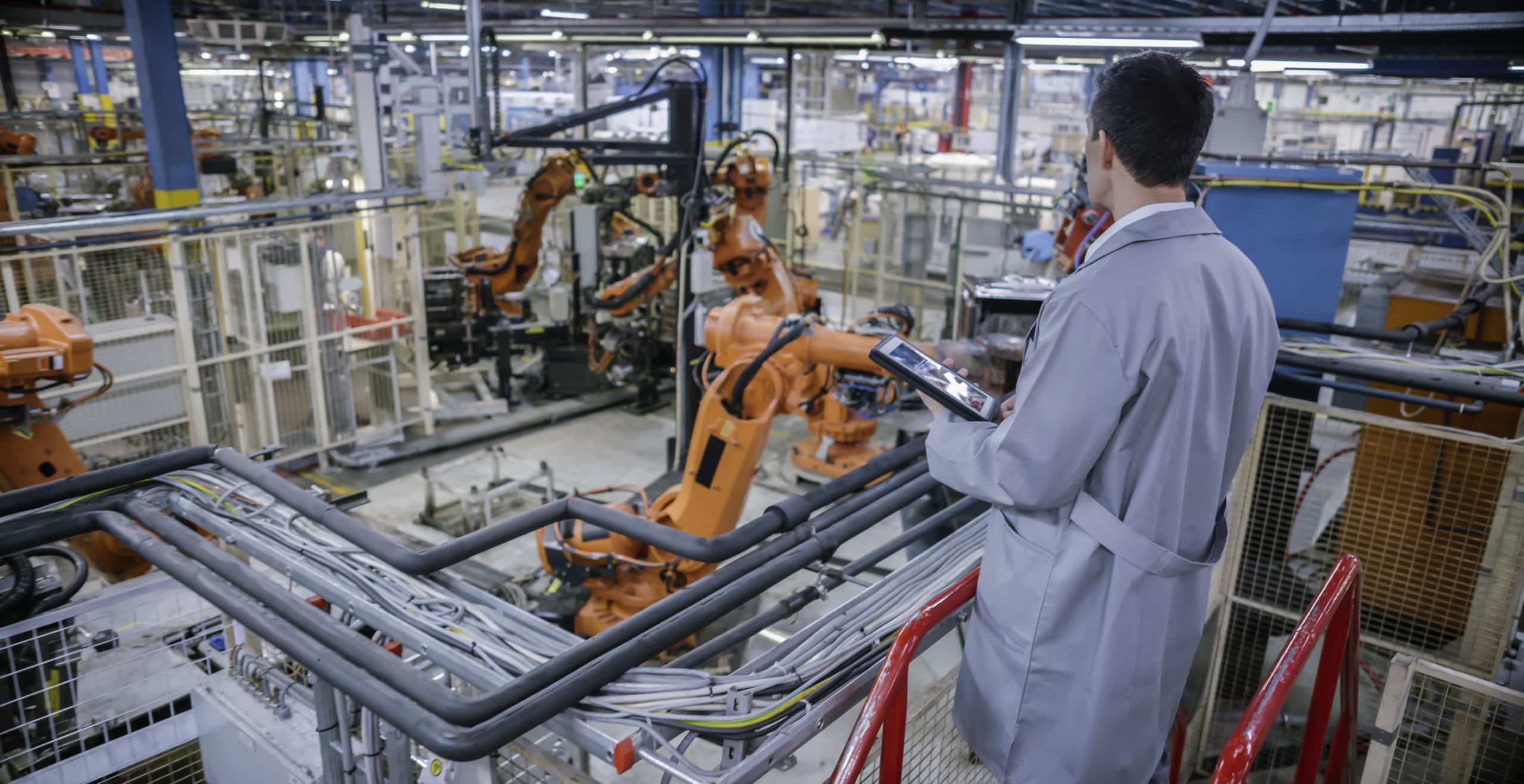Downtime is one of the most expensive challenges in today’s manufacturing landscape. Equipment stoppages can slow production, drive up costs, and erode competitiveness. That’s why many manufacturers now rely on a reliability engineer, a cross-functional expert who bridges operations, engineering, and maintenance.
Unlike siloed approaches of the past, reliability engineers use data-driven strategies to maximize uptime, extend equipment service life, and reduce operational costs. Their work supports Industry 4.0 and modern site reliability practices by blending advanced analytics with proven maintenance strategy.
What is reliability engineering?
Reliability engineering is a systematic discipline focused on ensuring equipment reliability, safety, and performance over time. It applies reliability analysis and reliability testing to prevent failures before they occur, rather than reacting after issues arise.
Core methods include:
- Reliability-centered maintenance (RCM): Designing the right mix of preventive, predictive, and corrective actions.
- Failure mode and effects analysis (FMEA): Identifying root causes of potential breakdowns.
- Predictive maintenance (PdM): Using data and sensors to detect issues early.
- System reliability modeling: Planning for performance across the entire asset lifecycle.
This proactive mindset supports both mechanical engineering and information technology, ensuring assets run safely and efficiently throughout their lifespan.
What does a reliability engineer do?
The role of the reliability engineer encompasses several important areas, each of which plays a part in optimizing equipment and production operations. Reliability and maintenance engineering takes each of these areas into account to provide in-depth, effective asset management solutions.
Some of the most critical functions are:
- Risk management: Only by assessing and identifying operational risks can a manufacturing operation be prepared to address and plan for them. Reliability engineers take a quantitative approach to assessing safety, maintenance and operational risks. They work with management, maintenance, operators and other personnel to minimize those risks and create plans to address them.
- Safety: Safety is one of the biggest contributors to equipment uptime since injuries and equipment malfunctions require extensive time to investigate and rectify. Reliability engineers assess safety factors and create operating plans designed to protect workers, maximize safety, reduce or eliminate workplace injuries, and improve equipment uptime.
- Loss elimination: Production losses can come from a variety of areas: unplanned downtime, tooling changeovers, supply chain or order funnel interruptions, and more—essentially, any situation that leads to idle equipment. Reliability engineers identify the biggest contributors to production loss, and work to reduce or eliminate them. Combined with efforts to moderate high maintenance costs, this is one of the areas in which reliability engineers can save manufacturers the most money.
- Life cycle asset management (LCAM): Reliability engineers work with other engineering departments to plan for production design, commissioning, installation and implementation. The goal is to ensure that every asset in the facility is carefully planned and accounted for in terms of service life, expected maintenance needs, MRO sourcing and inventory, testing, inspection, and more.

How they work in practice: For example, a reliability engineer may notice vibration anomalies detected by predictive maintenance sensors. They use the CMMS to generate a work order, collaborate with a maintenance engineer to schedule repairs, and communicate with planners to adjust production timelines. At the same time, they brief leadership on root causes and recommend process improvements to prevent recurrence.
Reliability engineers and maintenance engineers each play a critical role in maximizing uptime and keeping facilities running at peak performance. Maintenance engineers focus on daily planning and execution, while reliability engineers take the broader view—assessing risk, conducting FMEA, and leading initiatives that ensure long-term equipment reliability and uptime.
Maintenance strategies utilized by reliability engineers
Reliability engineers apply a range of philosophies to improve performance:
- Reliability-centered maintenance (RCM): Balancing preventive and predictive tasks.
- Failure mode and effects analysis (FMEA): Pinpointing weak spots before failures escalate.
- Total production maintenance (TPM): Involving operators in equipment care.
- Condition-based maintenance (CBM): Acting only when sensors detect early warning signs.
- Proactive maintenance: Implementing process improvements to prevent recurrence.
- Continuous improvement (Lean/Kaizen): Driving iterative changes for long-term gains.
By applying these strategies, reliability engineers ensure both equipment reliability and system reliability, reducing costs and extending asset lifespans.
Certifications and skills of a reliability engineer
Professional reliability engineers often pursue specialized training. Common credentials include:
- Certified reliability engineer (CRE)
- Certified maintenance & reliability professional (CMRP)
- Six Sigma certifications
Key skills include engineering expertise, data analytics, risk management, and strong communication across departments. In today’s data-driven environment, literacy in AI, cloud platforms, and software development is becoming increasingly important for site reliability engineers.
Technology used by reliability engineers
Reliability engineers rely on modern tools to support decision-making:
- Computerized maintenance management systems (CMMS): Track maintenance history and scheduling.
- Predictive maintenance sensors: Vibration, infrared, ultrasonic, oil analysis tools, and more.
- Reliability analytics software: Platforms for reliability analysis, root cause evaluation
,and life cycle cost modeling.
- Digital twin & IIoT platforms: Simulations that enhance site reliability engineering.
- Machine health monitoring: Systems like ATS’s Reliability 360® Machine Health Monitoring combine real-time data with expert oversight.
- Mobile & cloud tools: Enable field access to dashboards and faster collaboration.
These technologies empower site reliability engineers to prevent downtime and optimize performance.
The benefits of a reliability engineer
Reliability engineers introduce numerous benefits into an operation. These can include:
- More proactive maintenance and risk assessment: The reliability engineer’s focus on risk assessment and asset lifecycle management means a more proactive approach to maintenance. Personnel will be better prepared to act and react whenever maintenance is necessary.
- Improved uptime: With a primary goal of reducing production loss, reliability engineers can vastly increase equipment uptime, often with just a few changes to scheduling, maintenance and inventory practices.
- More effective maintenance: Reliability engineers engage in failure mode and effects analysis (FMEA) to go beyond the immediate causes of maintenance issues and identify the underlying factors—not only addressing the issue at hand but also improving operations and helping to prevent problems.
- Longer equipment service life: With a long-term focus on the entire equipment lifecycle, reliability engineers work to assure that operations “surprises” are kept to a minimum, and that the facility can be reasonably certain about how long a given asset will perform up to spec.
ATS reliability engineers helped one manufacturer save $43,000 by addressing a recurring failure pattern of one transformer with predictive maintenance tools and reliability analysis. This type of intervention not only reduced downtime costs but also demonstrated how targeted reliability engineering directly supports measurable ROI. Read the full customer success story here.
When to hire a reliability engineer
Key scenarios or events that might create a more immediate need to hire a reliability engineer include:
- As operations scale up, with more equipment and assets, it creates the potential for increased risk and maintenance requirements.
- While safety is always a critical concern in manufacturing, higher-risk industries should always have a reliability engineer on hand to minimize safety risks.
- If everyday maintenance or production costs seem too high, but do not have a readily apparent solution.
- If equipment reliability is consistently below manufacturer specifications or expectations.
- If unplanned downtime is a problem.
- When upgrading the maintenance strategy to be more proactive and risk-averse.
Downtime can cost large manufacturers anywhere from $10,000 to $250,000 per hour, depending on the industry. In contrast, the investment in a reliability engineer often pays for itself quickly by extending Mean Time Between Failures (MTBF), improving uptime percentages, and reducing losses tied to inefficiency. The ROI typically comes from fewer breakdowns as well as from longer asset service life and more consistent production output.
Who benefits from a reliability engineer?
Every industry with production machinery and assets can benefit from a reliability engineer.
Some of these industries include:
A reliability engineer can save you …
While every scenario is different, a reliability engineer can almost always offer:
Time savings:
- More efficient maintenance is conducted as part of a cohesive strategy
- Faster, more effective maintenance troubleshooting to get equipment back up and running more quickly
- More streamlined installation of equipment under dedicated commissioning strategies
- Less time spent on reactive maintenance
Cost savings:
- More proactive, efficient maintenance that reduces costly downtime
- More uptime for boosted revenue generation
- Elimination of duplicate maintenance and reliability efforts across departments
- Root cause analysis to correct recurring maintenance issues
Helping manufacturers around the world
ATS helps manufacturers improve their overall operations through the support of our reliability engineering team. As part of our predictive maintenance services and R360® Machine Health Monitoring solution, reliability engineers are ready to help you improve uptime, increase safety, identify failure root-cause and save costs across the board—much like we did in saving this manufacturer $43,000. To learn more, contact ATS today.






